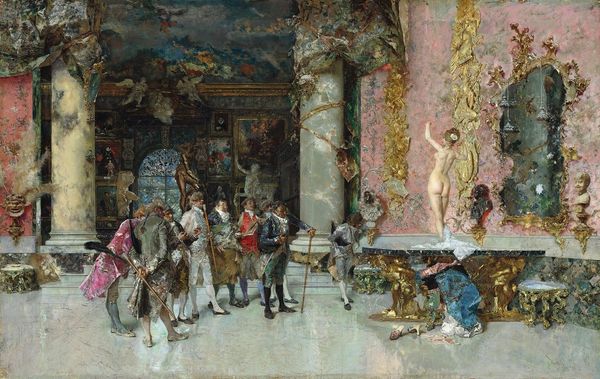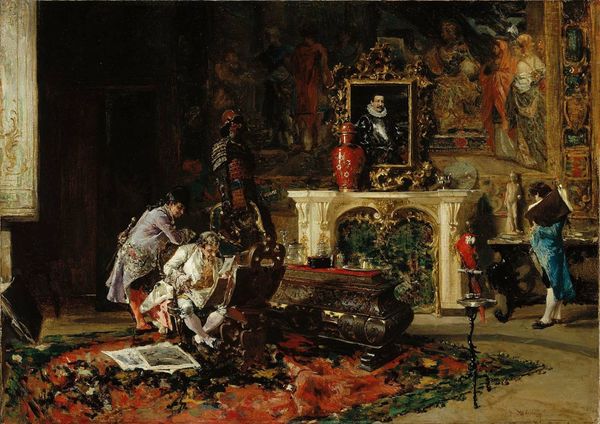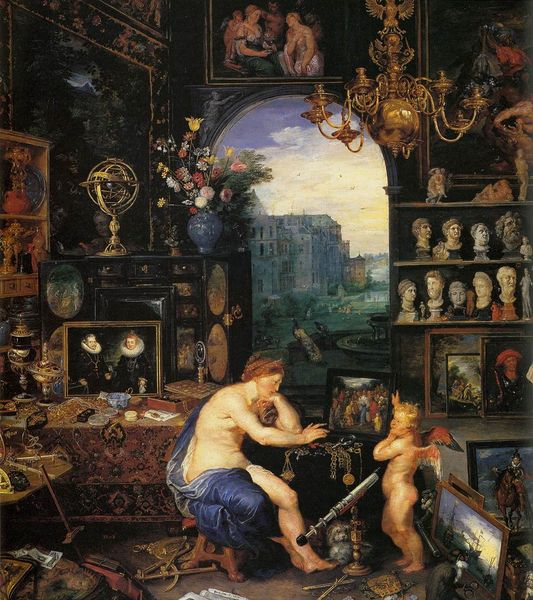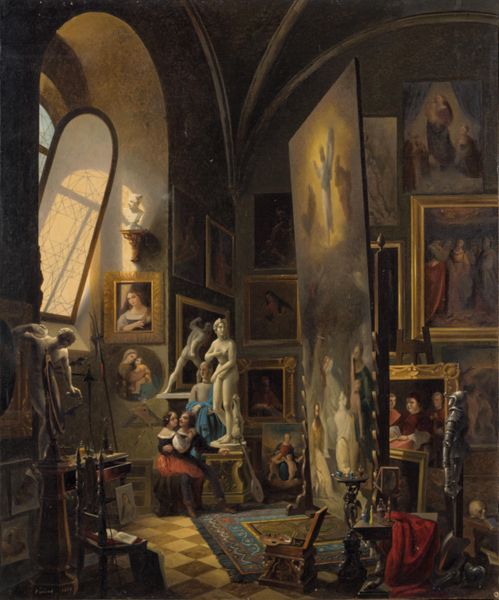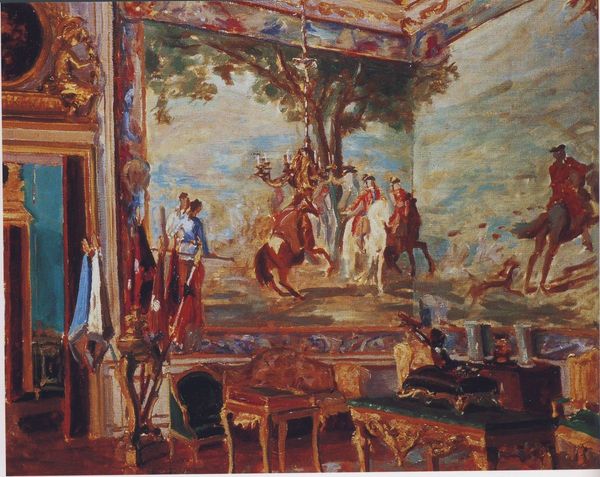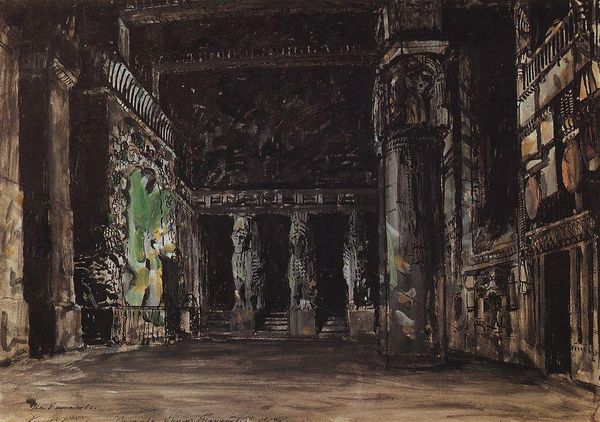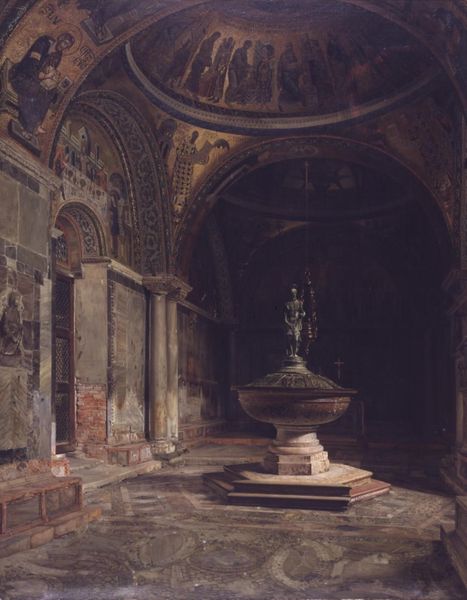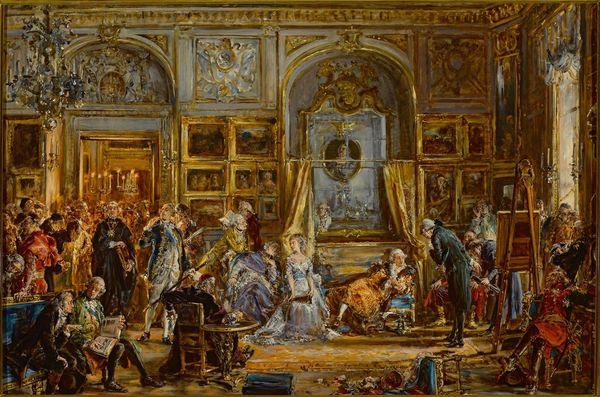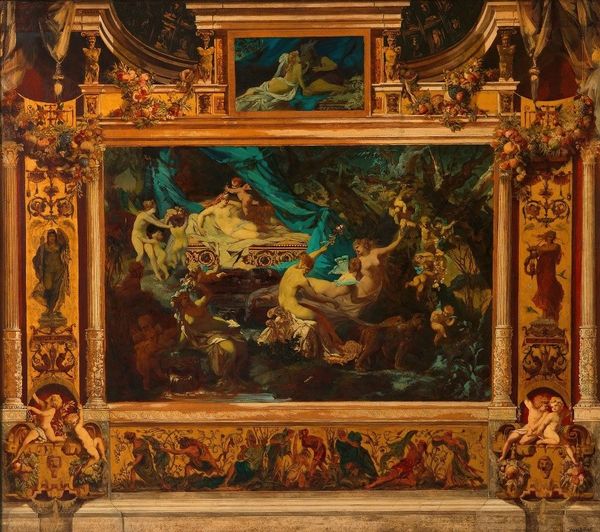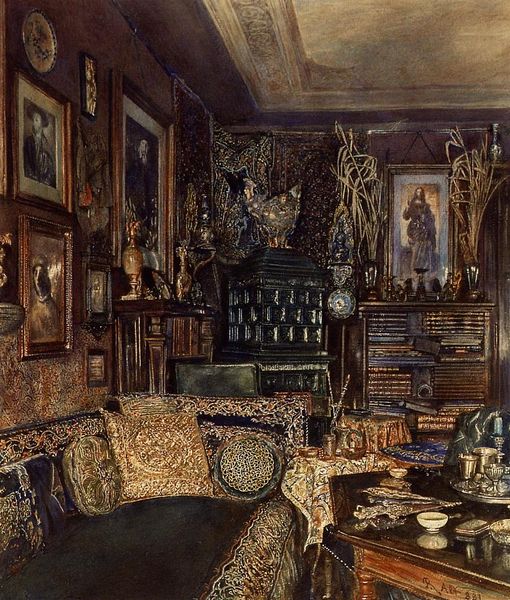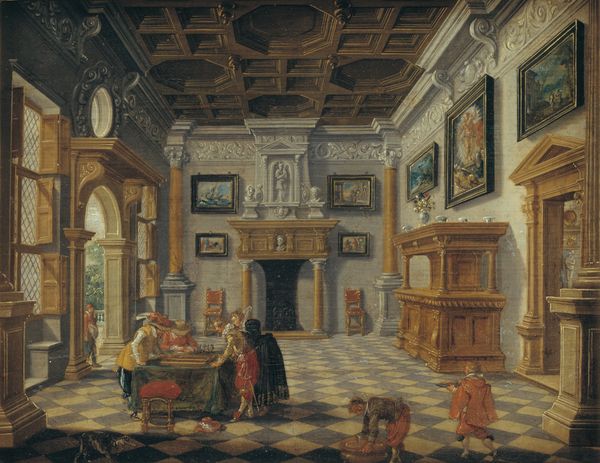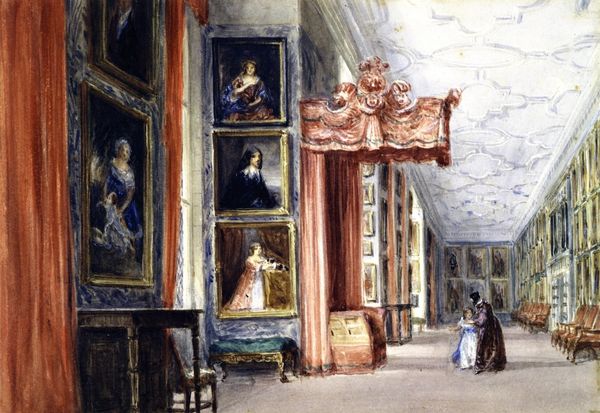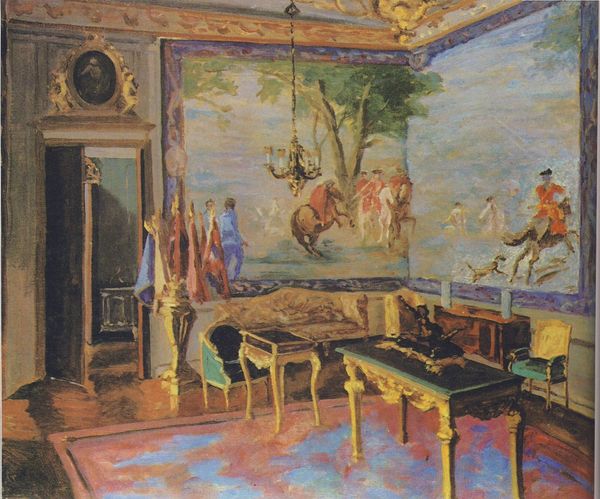
Copyright: Public domain
Curator: What a fascinating scene! This watercolor and oil painting is Rudolf von Alt’s "The Studio Before the Auction," created in 1855. It captures the pre-auction ambiance within an artist’s studio, I believe. Editor: Overwhelming at first glance. There’s such an immense density of detail. It feels claustrophobic and yet, simultaneously exciting. The textures seem so tactile despite being rendered in watercolor, giving an illusion of depth. Curator: Yes, it's intentionally overwhelming, I think! Consider the auction—a disruption, a forced dispersal of personal history. Alt uses the crammed space to visualize the accumulated memory present in a working space, an attic that now feels more like a tomb. Look at how classical forms appear again and again. The large canvas mimics the mythological subjects so popular, and echoes and riffs echo through art history to the painting itself, doesn't it? Editor: Absolutely. The visual weight leans heavily towards the left. I find my eye immediately drawn to the large painting dominated by lighter hues, that stands almost in dialogue with that obscuring dark foliage. This placement establishes a compositional imbalance. What is its significance, or is this imbalance perhaps intentional? Curator: Interesting you bring that up, because I think imbalance captures the unsettled emotional state of this space! The lush overgrown interior tells us about transience but it’s rooted to something lasting. See the motif, which represents fleeting, superficial things—but art is built to transcend that. So that tension, visual, as well as in my imagined historical scene, is quite critical, wouldn't you say? Editor: That push and pull is there for the careful observer. Ultimately, the piece makes us consider how artists, even in times of chaos, attempt to find beauty, even preserve it, using form and material. It's something I never considered about art. Curator: Indeed, it makes you consider Romanticism in a new way too, no? How its embrace of emotion can speak beyond what you merely see but perhaps to how it moves us in cultural memory too.
Comments
No comments
Be the first to comment and join the conversation on the ultimate creative platform.
